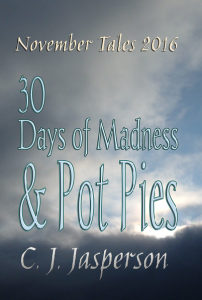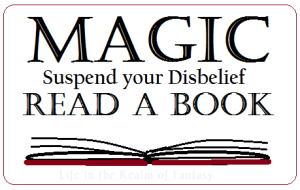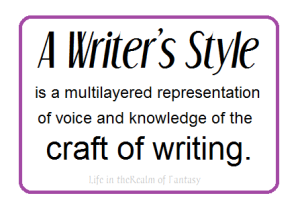Happy first day of 2024! The sun has been rising a few minutes earlier and setting a few later for a few days now, unnoticed because of the gloom and rain of a typical Pacific Northwest winter. Spring must be on the way because the internet says so.
 We are at the same latitude as Paris, Zurich, and Montreal but usually get a lot more rain than those cities. The North Pacific can be wild at this time of the year, which makes for some great storm-watching.
We are at the same latitude as Paris, Zurich, and Montreal but usually get a lot more rain than those cities. The North Pacific can be wild at this time of the year, which makes for some great storm-watching.
I read several books over the Christmas hiatus, two worth the time, and one—not so much.
The first two were written by the late mystery author Jane Haddam (Orania Papazoglou): Not a Creature Was Stirring (published in 1990) and Precious Blood (published in 1991). I had read both of these when they were first published, and let me say that they were every bit as great the second time as I thought they were the first.
The third book I read was on preorder for nearly a year, and I had been eagerly awaiting it. Published by one of the Big Traditional Publishers, it launched the second week of December 2023. The novel was written by one of my favorite fantasy author-duos. I’m not naming names because I don’t feel comfortable writing bad reviews. (That’s also why I don’t review books authors send to me.)
Unfortunately, this book is a masterclass in how NOT to structure a novel.
The book reads like something I might write when my mind is wandering, and I’m trying to figure out what to do next in a first draft. The first two-thirds of the novel is comprised of mental ramblings covering old ground and snippets of history. The lowest point comes when they spend ten pages dressing the main character for an important event, ten more pages covering the event, and three entire pages covering why the valet puts the ceremonial robes and tabards into storage.
 By the time the authors got to the meat of the matter (which was late in the second half) I no longer cared. Truthfully, when the fluff is carved away from this book, you might have 20,000 or so words of an interesting story—a novella.
By the time the authors got to the meat of the matter (which was late in the second half) I no longer cared. Truthfully, when the fluff is carved away from this book, you might have 20,000 or so words of an interesting story—a novella.
This proves to me that everyone writes a stinker once in a while because we’re all human. I suspect the authors having to meet a firm deadline for completing this novel is why it’s not as good as the previous two in that series.
The Big Traditional Publishers expect great things from their stable of authors, but pushing them to force out two or three novels a year does no one any favors.
Anyone can shove out words at a fast clip when you must set down a certain number of them daily to meet a deadline. But what you have when that deadline is met might only be a pile of words.
Sometimes, a book isn’t a novel. Sometimes, a story works best as a novella, and stretching it just doesn’t work. What are the traditional lengths for novels, novellas, and novelettes?
The internet says: Here are the differences between novels, novellas, and novelettes:
- A novelette is longer than a short story but shorter than a novella. The word count is usually between 7,500 words to 17,500 words.
- A novella is longer than a novelette and is sometimes called a long short story or a short novel. It is usually around 20,000 words or more.
- A novel is longer than a novella and is meant to be read over several days.
- All tell a complete story within that length.
- Traditionally, novelettes tended to focus on whimsical, sentimental themes. The modern-day novelette, though, is more like the novella because it can encompass different genres like sci-fi, drama, or historical short fiction.
The internet pulled the above information from this website: Learn the Differences Between Novelettes, Novellas, and Novels – 2023 – MasterClass. I highly recommend clicking on this link for a good article on the length, word count, and expected content of these literary forms. Who knows? You might want to take one of their masterclasses.
Writing long-form stories is a struggle at times. I have a “passel” of short-form stories and plan to format and publish two volumes of short stories, novelettes, and novellas sometime this year.
 I’m planning two volumes because one will feature stories set in the world of Neveyah, and the other will be random speculative short fiction pieces.
I’m planning two volumes because one will feature stories set in the world of Neveyah, and the other will be random speculative short fiction pieces.
The New Year is upon us, and frankly, it’s getting off to a strange start.
Greg and I are in self-imposed quarantine because two days ago, we were exposed to Covid at close quarters.
I had planned to make an Avocado, Tomato, and Cucumber salad to take to last night’s annual New Year’s Eve party. Instead, we sat at home, watched a new episode of Vera, and watched New Year’s at the Space Needle: The Space Needle Dazzles the Pacific Northwest with Lights, Drones, and Fireworks for T-Mobile New Year’s at the Needle (yahoo.com).
The fireworks display over the Space Needle has become a Pacific Northwest tradition, and they went all out this year. The drones were amazing. I managed to stay awake long enough to watch it all.
Regardless of the plague, Greg and I enjoyed the evening. I hope your new year gets off to a great beginning. Wherever you are in this world, I wish you all the good things life can bring!


 When we write mild reactions, it’s unnecessary to offer too many emotional descriptions because mild is boring.
When we write mild reactions, it’s unnecessary to offer too many emotional descriptions because mild is boring. The discomfort of witnessing a marital squabble:
The discomfort of witnessing a marital squabble: Just don’t go overboard. They will offer nine or ten hints that are physical indications for a wide range of surface emotions. You can usually avoid dragging the reader through numerous small facial changes in a scene simply by giving their internal reactions a little thought.
Just don’t go overboard. They will offer nine or ten hints that are physical indications for a wide range of surface emotions. You can usually avoid dragging the reader through numerous small facial changes in a scene simply by giving their internal reactions a little thought.

![John Leech [CC0], via Wikimedia Commons](https://conniejjasperson.com/wp-content/uploads/2017/12/marleys_ghost_-_a_christmas_carol_1843_opposite_25_-_bl.jpg?w=216&h=300)
![John Leech [Public domain], via Wikimedia Commons](https://conniejjasperson.com/wp-content/uploads/2017/12/scrooges_third_visitor-john_leech1843.jpg?w=187&h=300)

![Moonrise, by Stanisław Masłowski PD100yrs [[File:MaslowskiStanislaw.WschodKsiezyca.1884.ws.jpg|MaslowskiStanislaw.WschodKsiezyca.1884.ws]]](https://conniejjasperson.com/wp-content/uploads/2017/10/maslowskistanislaw-wschodksiezyca-1884-ws.png?w=500)











